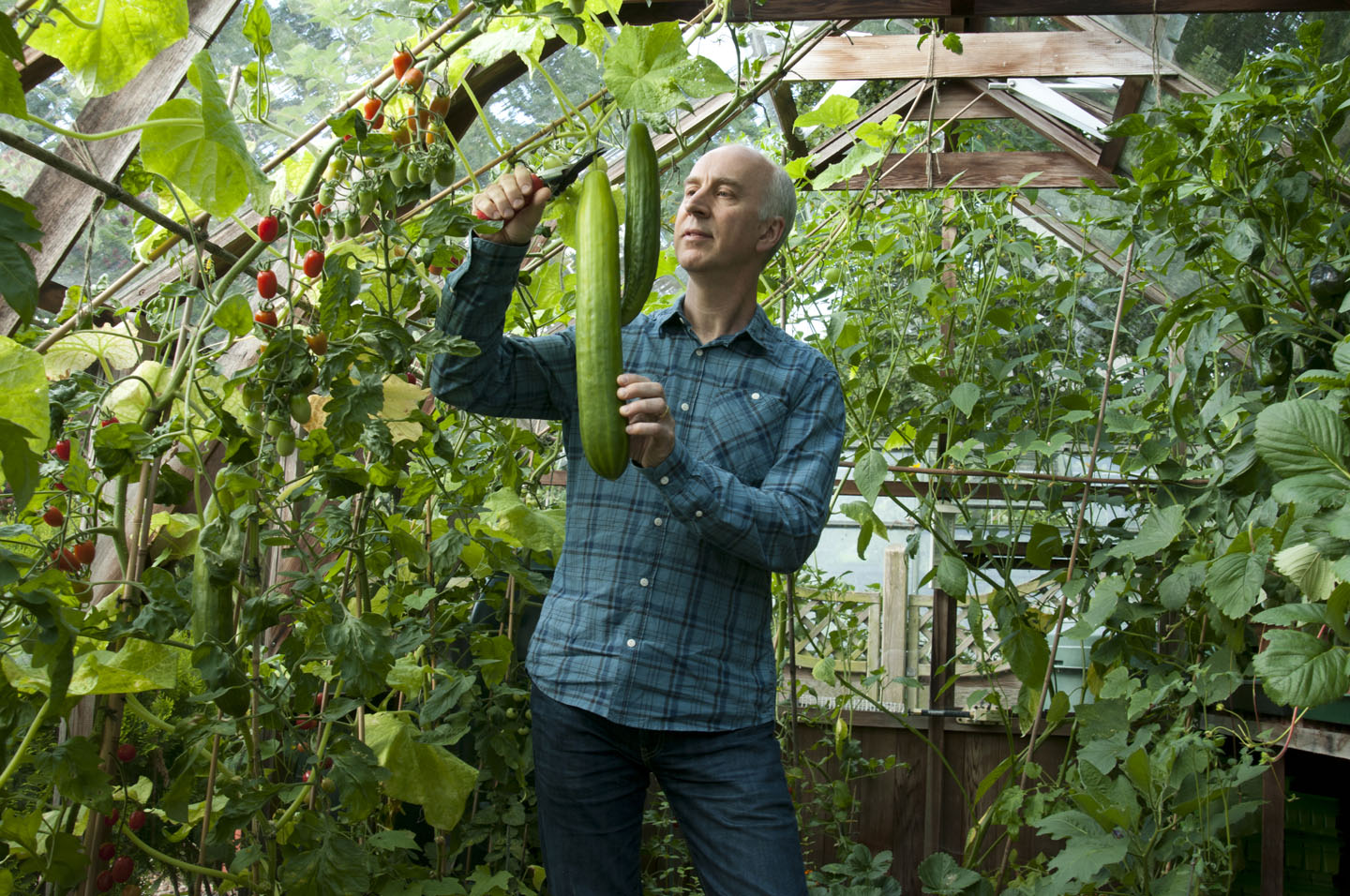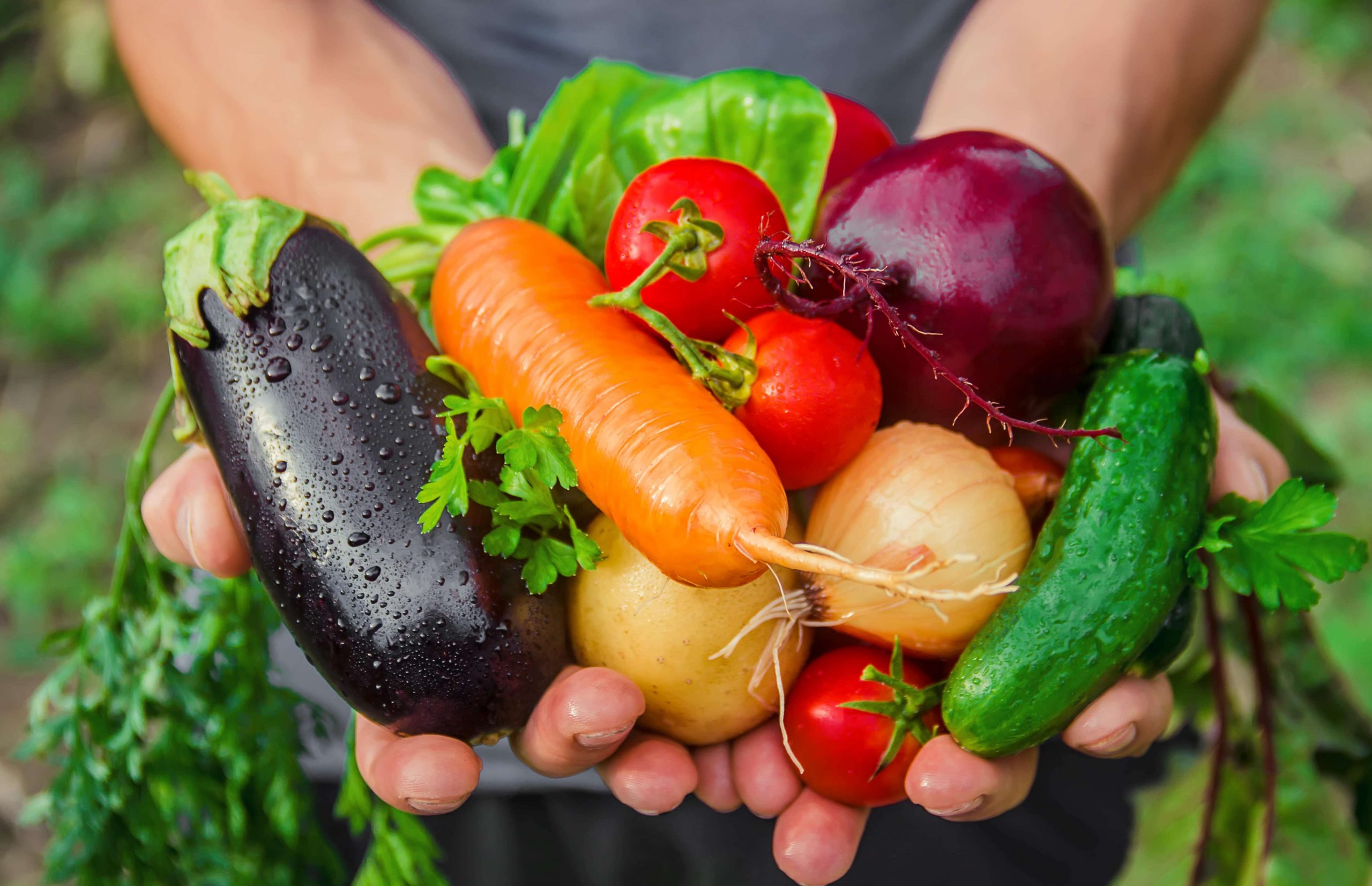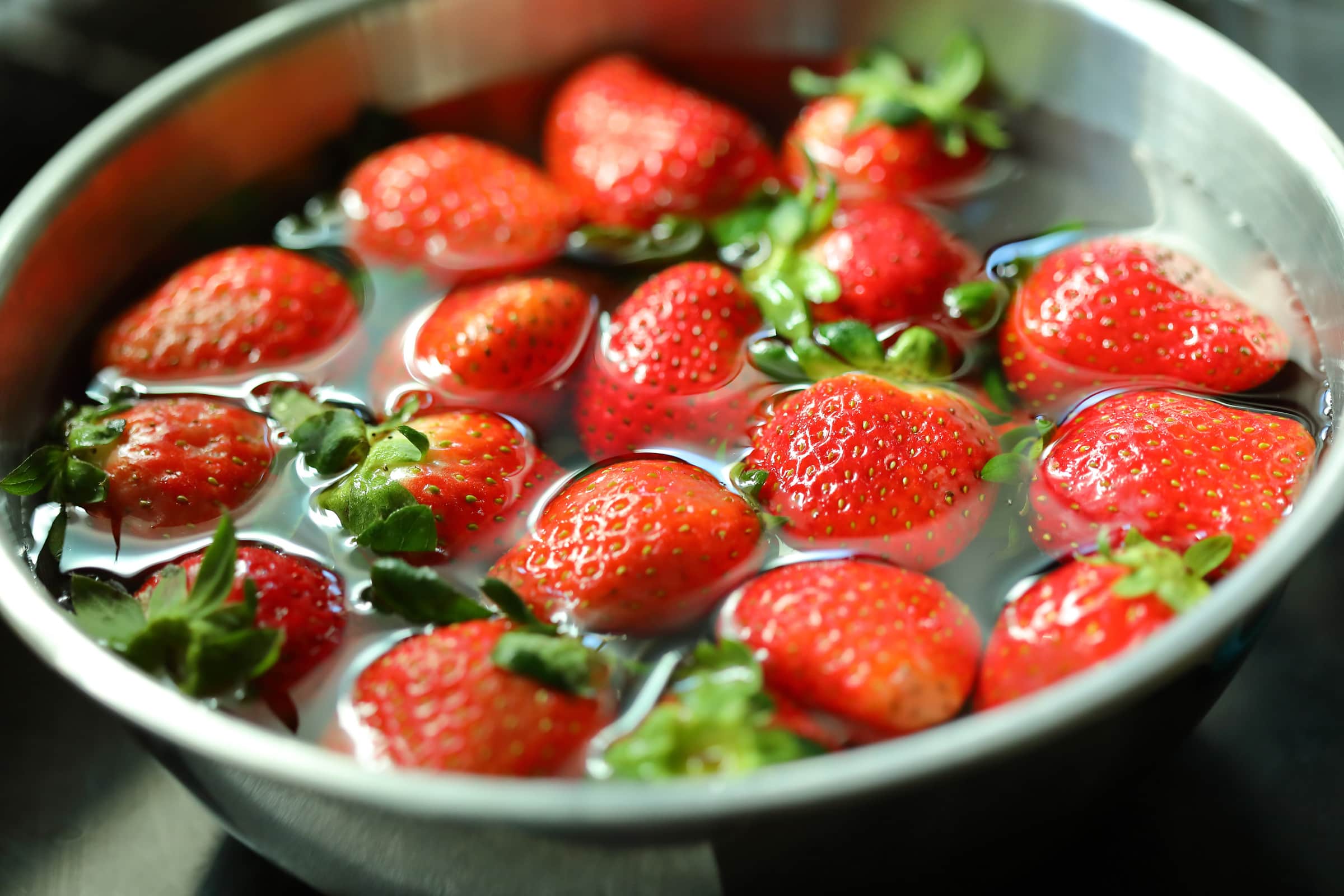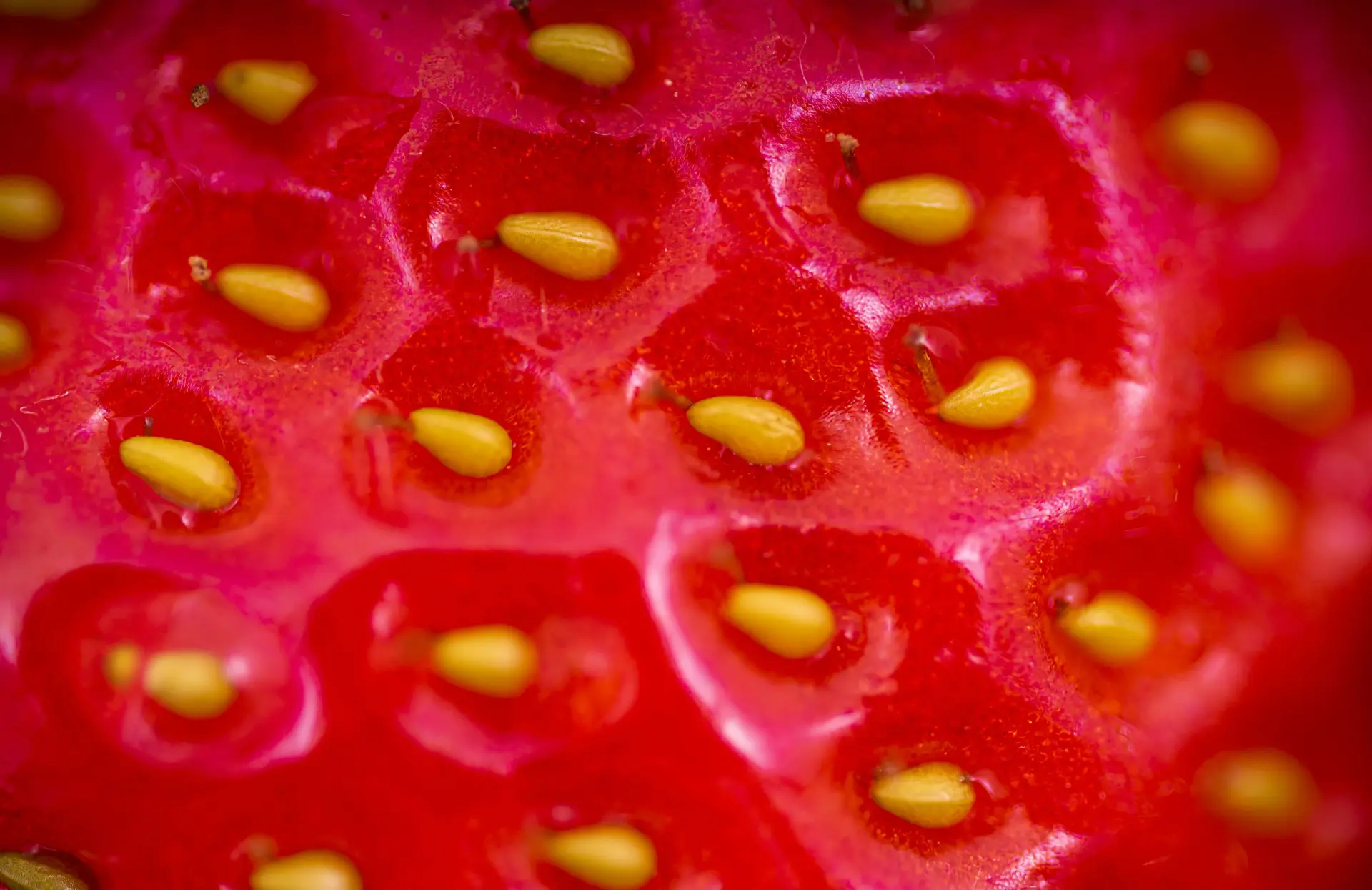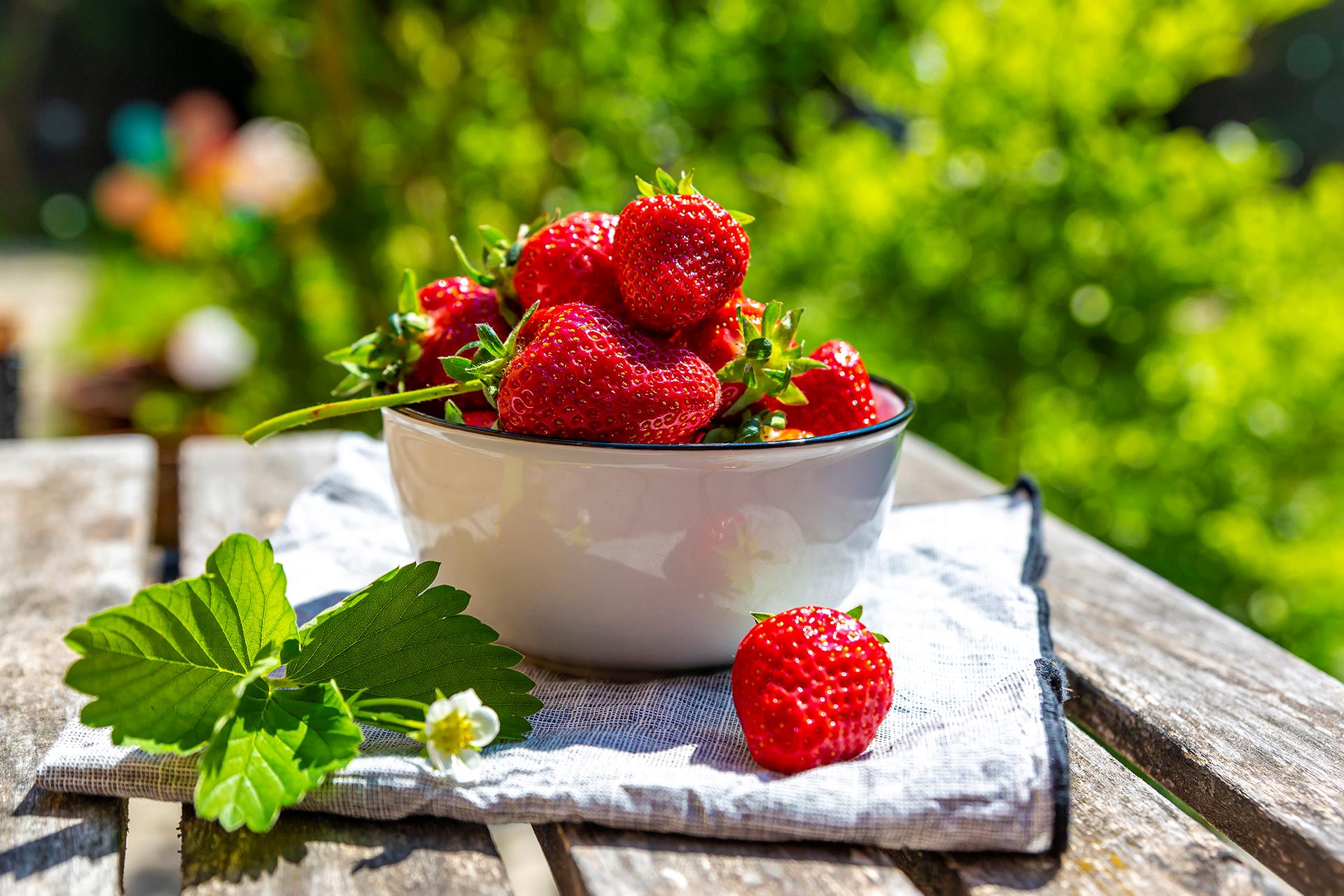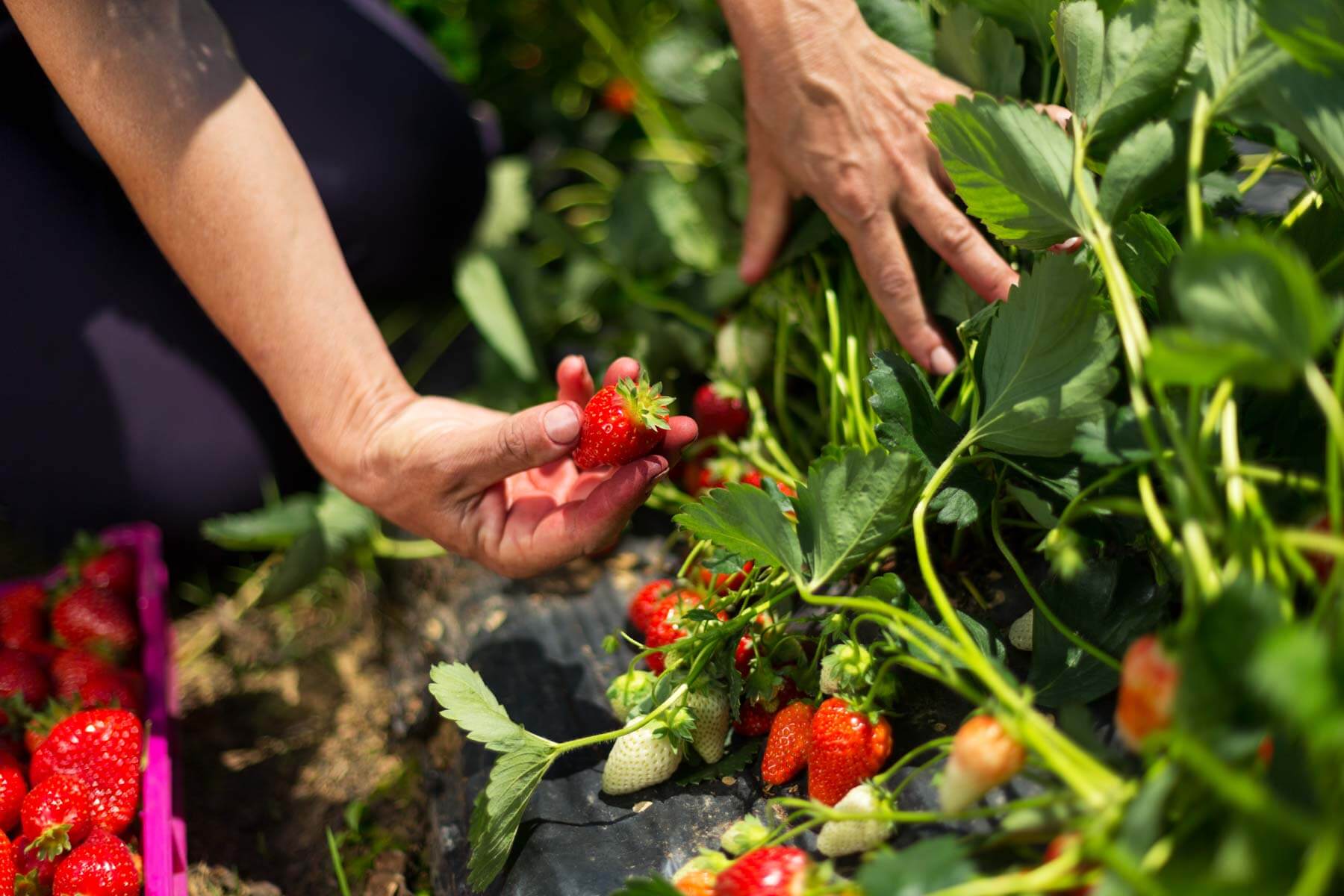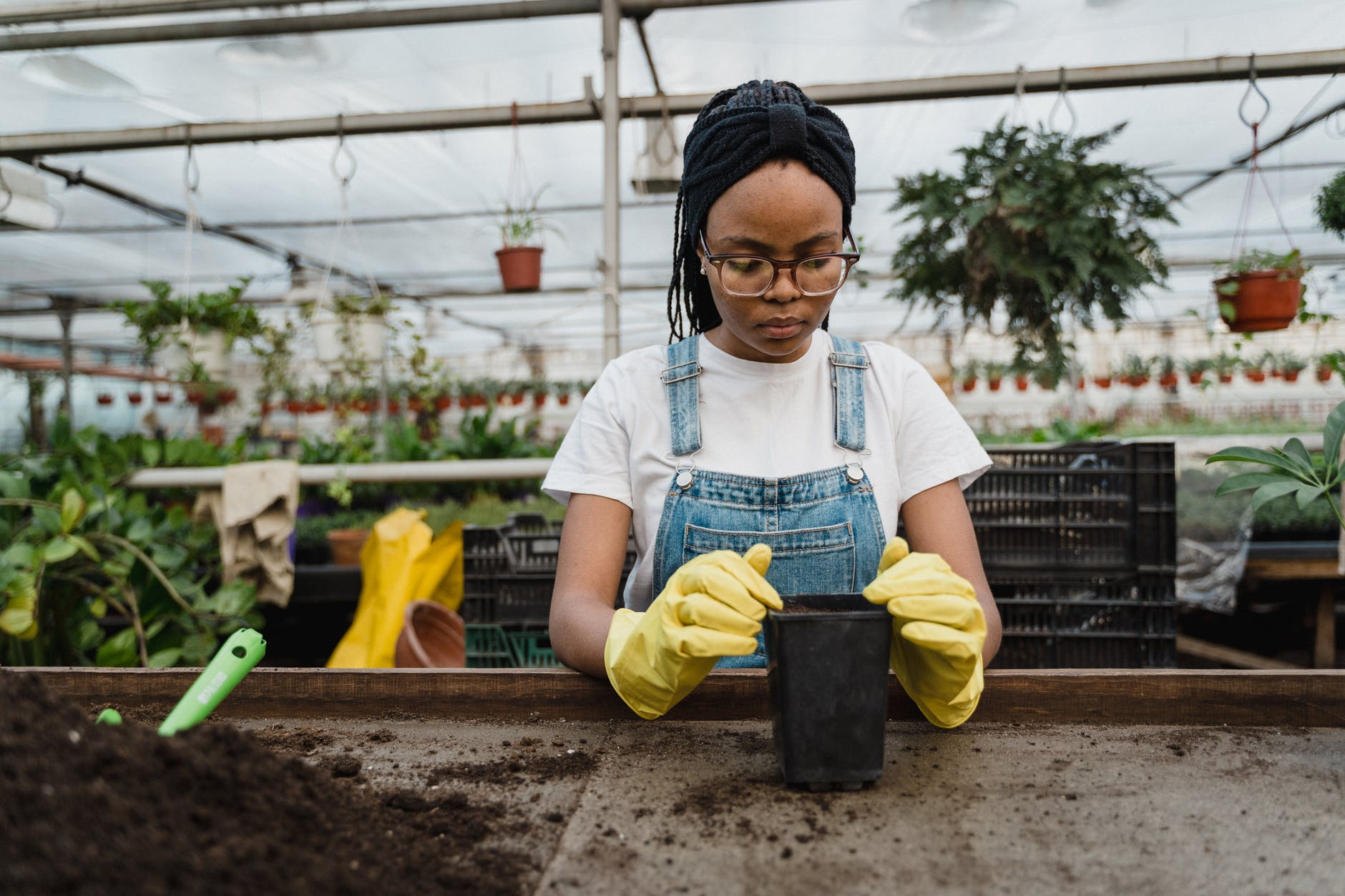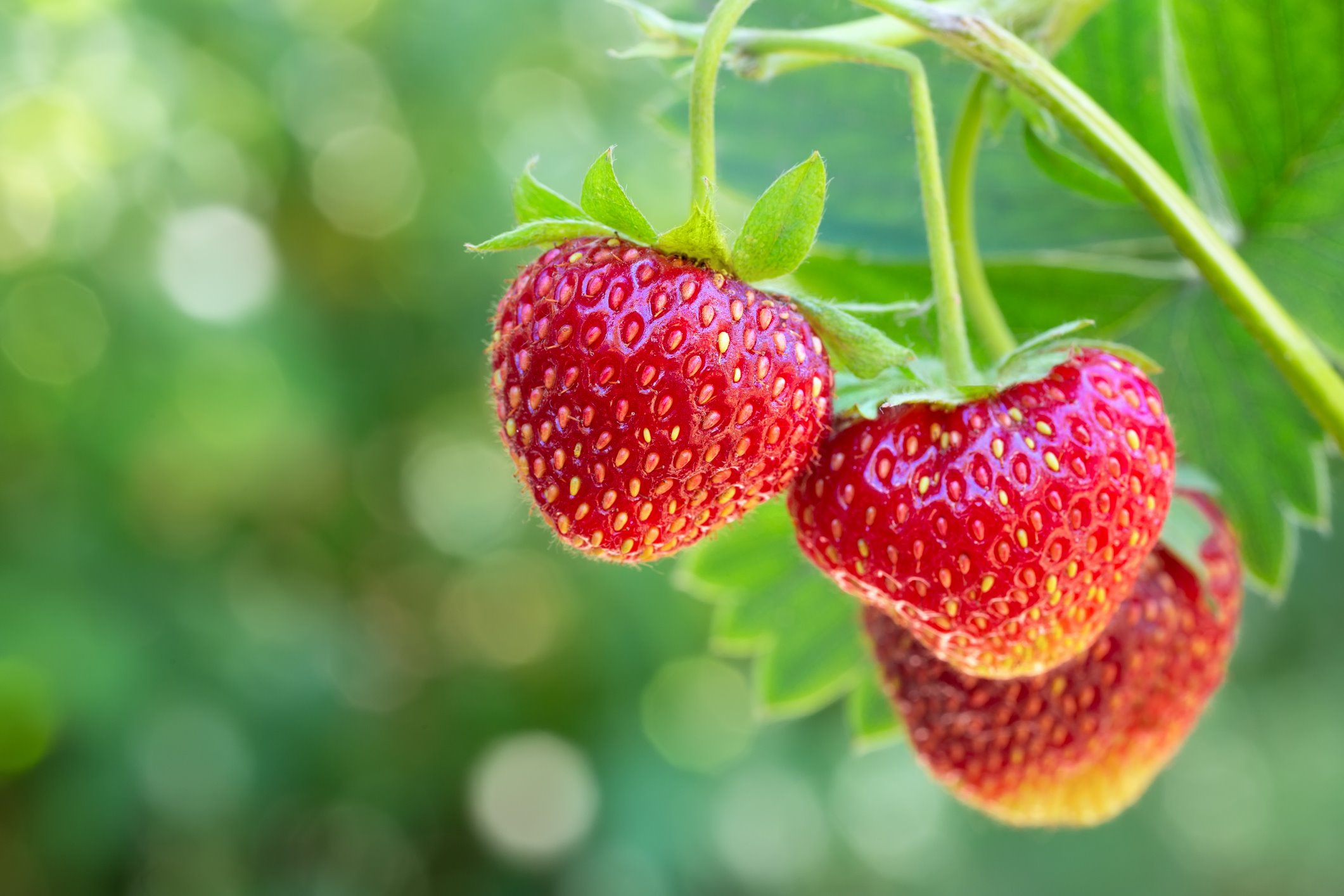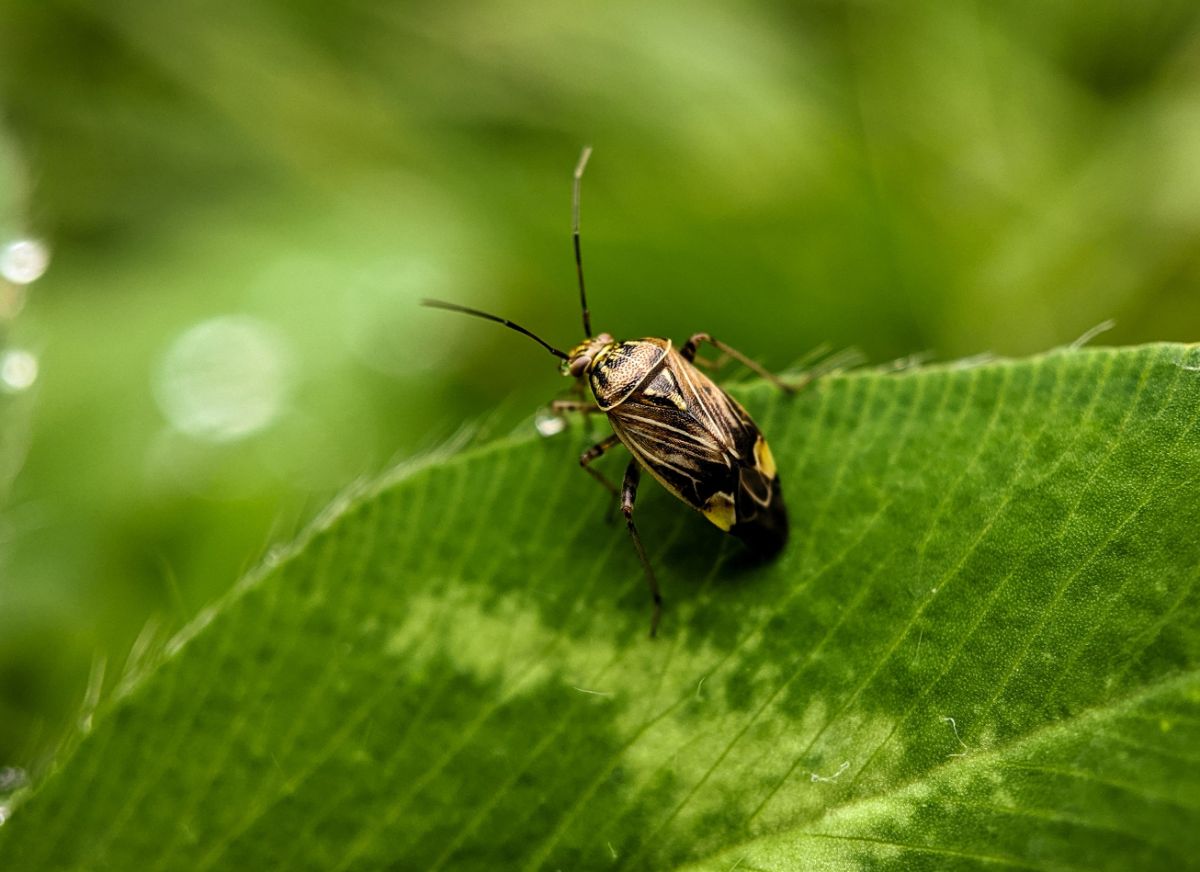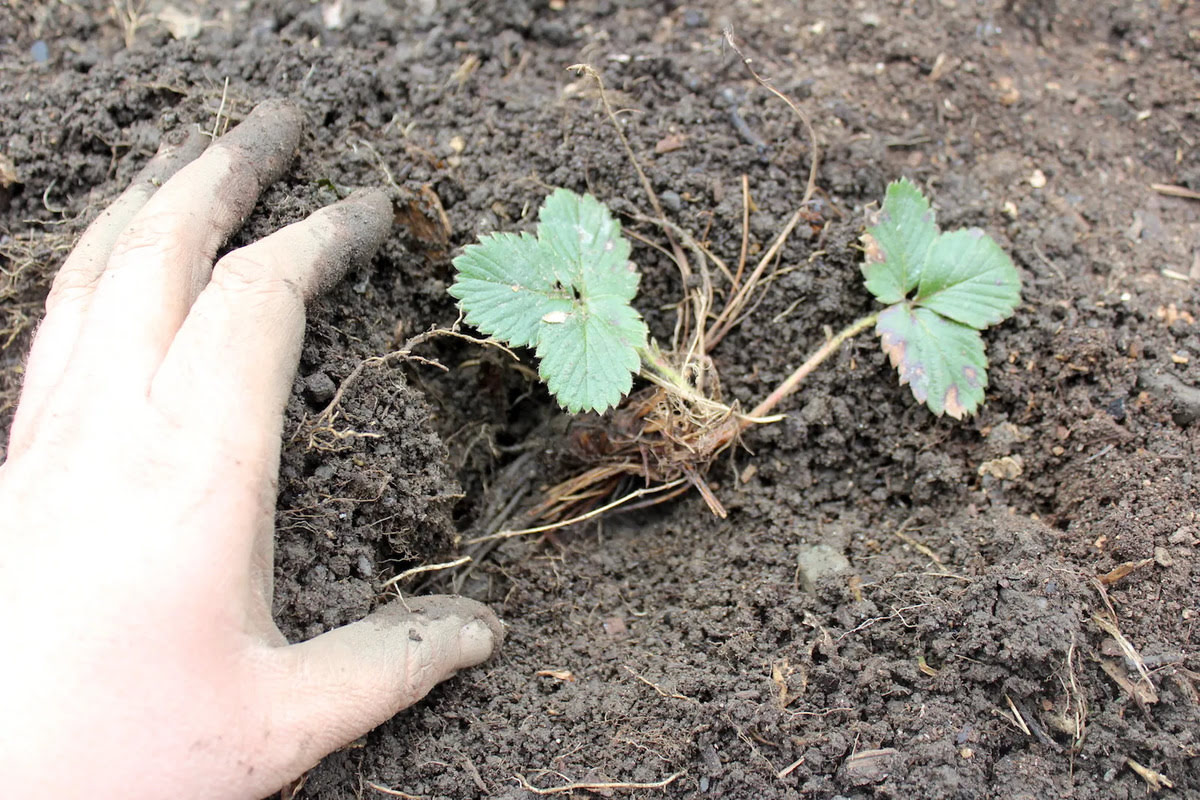Home>Gardening Techniques>How To Grow Strawberries In A Greenhouse
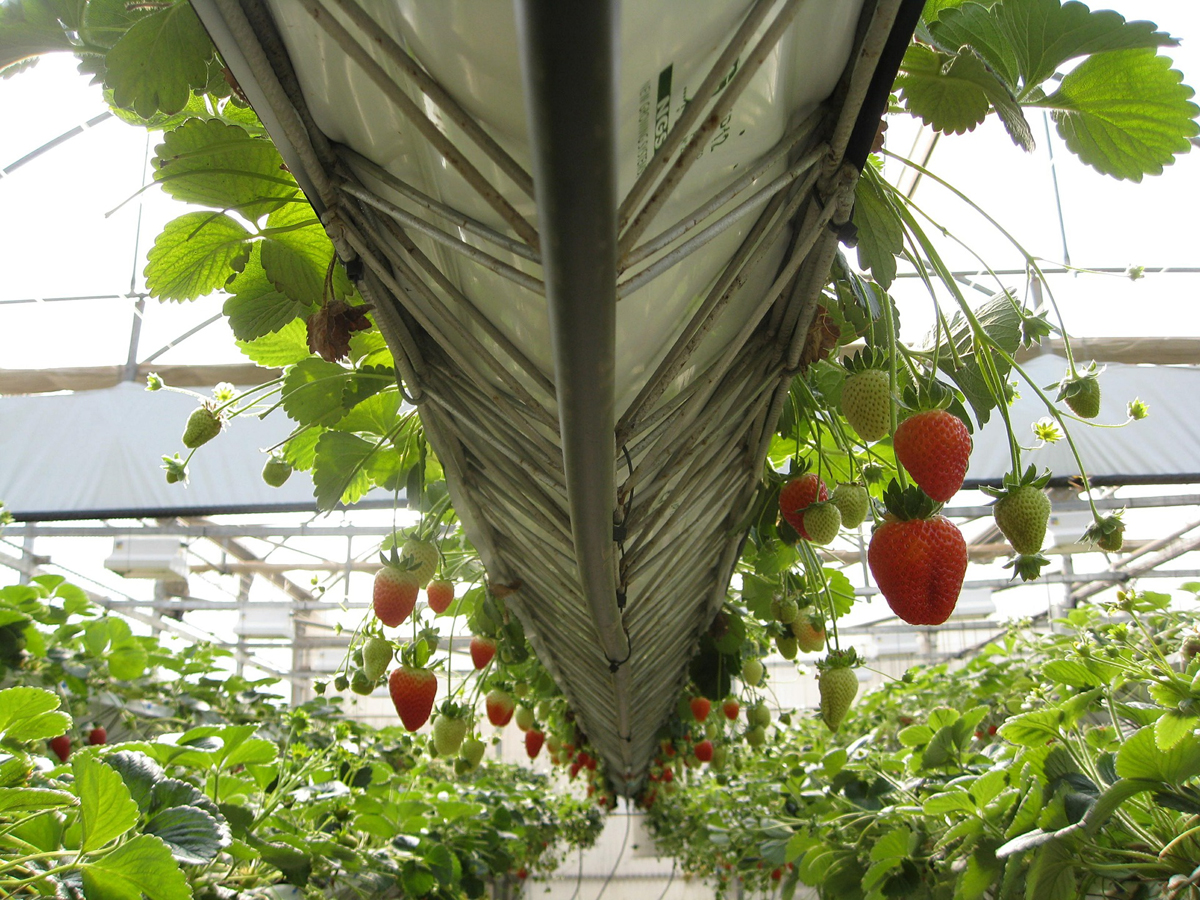

Gardening Techniques
How To Grow Strawberries In A Greenhouse
Modified: January 22, 2024
Discover the best plant care tips for growing strawberries in a greenhouse. Learn how to optimize temperature, lighting, and watering to ensure a bountiful harvest.
(Many of the links in this article redirect to a specific reviewed product. Your purchase of these products through affiliate links helps to generate commission for Chicagolandgardening.com, at no extra cost. Learn more)
Table of Contents
Introduction
Growing strawberries in a greenhouse can be a rewarding and fruitful experience. Not only do greenhouse-grown strawberries produce bigger and juicier fruits compared to their outdoor counterparts, but they also offer the convenience of year-round cultivation. Whether you’re a seasoned gardener looking to expand your plant care repertoire or a beginner eager to delve into the world of greenhouse gardening, this article will guide you on how to grow strawberries in a greenhouse successfully.
Strawberries are versatile fruits that can be enjoyed fresh, frozen, or used in various culinary creations, making them a popular choice for home gardeners and commercial growers alike. By utilizing a greenhouse, you can create a controlled environment that provides optimal conditions for strawberry plants to thrive.
In this comprehensive guide, we will cover all the essential steps to set up and maintain a successful strawberry growing operation in your greenhouse. From choosing the right variety to harvesting the sweet fruits, we will dive into the crucial aspects of greenhouse strawberry production. So, let’s roll up our sleeves and get ready to embark on this fruitful journey!
Choosing the Right Variety
When it comes to growing strawberries in a greenhouse, selecting the right variety is crucial to ensure a bountiful harvest. There are numerous strawberry varieties available, each with its own unique characteristics and requirements. Here are a few key factors to consider when choosing the right strawberry variety for your greenhouse:
- Day-neutral or everbearing: Day-neutral strawberry varieties are a popular choice for greenhouse cultivation as they can produce fruit throughout the year, regardless of day length. Everbearing varieties, on the other hand, produce two to three crops per year, with the main harvest in late spring or early summer. Consider your desired harvesting schedule when selecting the variety.
- Growth habit: Strawberries can be categorized into two main growth habits: matted row and runnerless. Matted row varieties produce runners, which are plants that spread horizontally, forming a dense mat of strawberry plants. Runnerless varieties, also known as “day-neutral” varieties, do not produce runners and are more compact in growth. Select the growth habit that suits your greenhouse space and management preferences.
- Flavor and fruit size: Different strawberry varieties offer varying flavors and fruit sizes. Some are known for their intense sweetness, while others may have a more balanced or tart flavor. Consider your personal preference and the market demand when selecting a variety.
- Disease resistance: Some strawberry varieties are more resistant to common diseases such as powdery mildew, gray mold, or verticillium wilt. Choosing disease-resistant varieties can help reduce the risk of plant loss and ensure a healthier crop in the long run.
Popular greenhouse strawberry varieties include ‘Albion,’ ‘Seascape,’ ‘Aromas,’ and ‘Tristar’ for day-neutral varieties, and ‘Chandler’ and ‘Mara des Bois’ for everbearing varieties. However, it’s essential to research and choose varieties that are recommended for your specific growing region and greenhouse conditions.
By carefully considering these factors and researching suitable varieties, you can select the best strawberry variety that meets your growing goals and maximizes your greenhouse’s potential.
Preparing the Greenhouse
Before you can start growing strawberries in your greenhouse, it’s essential to properly prepare the environment for optimal plant growth. Here are the key steps to prepare your greenhouse:
- Clean and sanitize: Start by thoroughly cleaning the greenhouse structure, including the walls, flooring, and equipment. Remove any debris, old plant materials, and weeds. Sanitize all surfaces with a mild bleach solution to eliminate any potential pests or diseases.
- Improve soil or use containers: If you plan to grow strawberries directly in the ground, it’s important to prepare the soil. Strawberries prefer well-draining soil rich in organic matter. Test the soil pH and make any necessary adjustments. Alternatively, you can opt for container gardening, using raised beds or containers filled with a high-quality potting mix.
- Install irrigation system: Provide a reliable irrigation system to ensure consistent moisture levels for your strawberry plants. Drip irrigation is ideal for greenhouse cultivation, as it delivers water directly to the plant’s root zone, minimizing water wastage and reducing the risk of foliar diseases.
- Create proper ventilation: Adequate airflow is essential to prevent the buildup of humidity, which can lead to disease issues. Install vents, fans, or louvers to promote proper air circulation within the greenhouse. This will also help control temperature fluctuations.
- Consider supplemental lighting: While strawberries require natural sunlight for growth, supplemental lighting can be beneficial, especially during the darker months or in regions with limited sunlight. Install grow lights to provide the necessary light energy for optimal plant growth and fruit development.
- Set up trellising or support system: As strawberry plants grow, they will produce runners that need proper support. Install a trellising system or use stakes and netting to support the plants and keep the fruits off the ground, reducing the risk of rot and pest damage.
By adequately preparing your greenhouse, you create an environment that promotes healthy growth and ensures the success of your strawberry plants. Take your time to complete these steps, paying attention to detail, and providing the optimum conditions for your strawberry plants to thrive.
Providing Adequate Light
Light is an essential factor in the successful growth of greenhouse strawberries. While these plants thrive in natural sunlight, supplemental lighting may be necessary, especially in regions with limited sunlight or during darker seasons. Here’s what you need to know about providing adequate light for your greenhouse strawberries:
- Positioning greenhouse: Choose the ideal location for your greenhouse to maximize exposure to natural sunlight. Avoid shading from tall trees or buildings that can block sunlight. Orient the greenhouse in a way that it receives maximum sunlight throughout the day.
- Understanding light requirements: Strawberry plants require a minimum of 6-8 hours of direct sunlight each day to thrive. Insufficient light can lead to weak growth, reduced fruiting, and overall poor plant health. Assess the natural light conditions in your greenhouse to determine if supplemental lighting is necessary.
- Types of grow lights: If natural light is limited, consider using supplemental grow lights to provide the necessary light energy for your strawberry plants. LED (Light Emitting Diode) lights are the most energy-efficient and popular choice for greenhouse strawberry cultivation due to their low heat emission and adjustable light spectrum. Fluorescent and High-Intensity Discharge (HID) lights are also suitable options, but they generate more heat and may require additional cooling measures.
- Proper light intensity and duration: Strawberry plants require a light intensity of 600-800 µmol/m²/s for optimal growth and fruiting. Adjust the height and positioning of the grow lights to provide uniform light distribution and maintain the recommended light level. Generally, 12-16 hours of total light exposure (natural and supplemental) is ideal for greenhouse-grown strawberries.
- Light spectrum: Strawberry plants respond favorably to a full spectrum of light, including blue, red, and far-red wavelengths. Blue light promotes foliage growth, red light stimulates flowering and fruiting, while far-red light encourages plant elongation. Choose grow lights that provide a balanced spectrum or customize the light spectrum based on the growth stage of the plants.
It’s important to regularly monitor the light conditions in your greenhouse, especially if relying on supplemental lighting. Adjust the lighting schedule, intensity, and spectrum as needed based on the growth stage of your strawberry plants. By providing adequate light, you ensure healthy plant growth, robust fruiting, and a bountiful harvest of sweet and succulent strawberries.
Controlling Temperature and Humidity
Maintaining optimal temperature and humidity levels in your greenhouse is crucial to ensure the healthy growth and development of strawberry plants. Both factors directly influence plant growth, flowering, fruiting, and overall plant health. Here are the key points to consider when controlling temperature and humidity in your greenhouse:
- Temperature regulation: Strawberry plants thrive in temperatures between 60-75°F (15-24°C) during the day and slightly cooler temperatures at night. Install a thermostat-controlled heating system to maintain the desired temperature range in colder months. Similarly, in warmer months, use exhaust fans, shade cloths, or evaporative coolers to ensure the greenhouse stays within the optimal temperature range.
- Air circulation: Proper airflow is essential to prevent the buildup of excessive heat and humidity, ensuring adequate gas exchange and reducing the risk of fungal diseases. Use circulation fans or natural ventilation to maintain a gentle breeze throughout the greenhouse.
- Humidity management: While strawberries prefer relative humidity levels between 60-70%, excessively high humidity can lead to fungal diseases, such as powdery mildew and botrytis. Use a dehumidifier or natural ventilation to lower humidity levels when necessary. Additionally, drip irrigation and bottom watering can help avoid excess moisture on the leaves, decreasing the chance of fungal diseases.
- Thermal screens and shading: Install thermal screens or shade cloths to control the amount of sunlight and heat entering the greenhouse. This can help regulate temperature fluctuations and prevent excessive heat stress on the strawberry plants.
- Monitoring and automation: Regularly monitor temperature and humidity levels using thermometers and hygrometers placed at different locations in the greenhouse. Consider using automated environmental control systems that adjust temperature, humidity, and ventilation based on preset parameters.
Remember to adjust temperature and humidity levels based on the growth stage of your strawberry plants. Young seedlings may require slightly higher temperatures for optimal root development, while flowering and fruiting stages may benefit from slightly cooler temperatures to facilitate fruit set and quality.
By diligently controlling temperature and humidity levels, you create a favorable environment for your greenhouse strawberries, promoting healthy growth, fruiting, and ultimately, a successful harvest of delicious strawberries.
Watering and Fertilizing
Proper watering and fertilizing practices are essential for the healthy growth and abundant fruit production of greenhouse-grown strawberries. These practices ensure that the plants receive the necessary nutrients and water to thrive. Here are some guidelines to follow when it comes to watering and fertilizing your greenhouse strawberries:
- Watering: Strawberries prefer evenly moist soil, but they are susceptible to root rot if over-watered. Avoid waterlogged conditions by allowing the soil to dry slightly between watering sessions. Use a drip irrigation system or water directly at the soil level to minimize moisture on the foliage, reducing the risk of foliar diseases. Adjust watering frequency based on the temperature, humidity, and growth stage of the plants.
- Water quality: Ensure that the water you use for irrigation is of good quality. Ideally, the water should have a pH level between 5.5-6.5 to prevent nutrient deficiencies or imbalances. If the pH is too high or low, adjust it using pH modifiers. Additionally, be cautious of the water’s mineral content, as excessive salts or minerals can harm the plants. Consider installing a filter or using rainwater for irrigation when possible.
- Fertilizing: Strawberry plants have specific nutrient requirements to support their growth and fruit production. Apply a slow-release organic fertilizer or a balanced water-soluble fertilizer formulated for strawberries. Follow the manufacturer’s instructions regarding application rates and frequency. Generally, it is advisable to fertilize strawberries every 4-6 weeks during the growing season. Be cautious not to over-fertilize, as it can lead to excessive foliage growth at the expense of fruit production.
- Monitoring and adjusting: Regularly monitor the overall health and growth of your strawberry plants. Look for signs of nutrient deficiencies, such as yellowing leaves or stunted growth. Adjust your fertilization program accordingly to address any deficiencies or excesses. Similarly, observe the plants’ response to watering, ensuring that they neither suffer from drought stress nor sit in overly wet conditions.
- Organic alternatives: If you prefer an organic approach, consider using compost or well-rotted manure to enrich the soil with nutrients. Additionally, organic fertilizers like fish emulsion or seaweed extract can provide essential micronutrients and promote healthy plant growth.
Remember, each strawberry variety and growing condition may have unique requirements, so it’s important to monitor your plants closely and adjust watering and fertilization practices accordingly. By providing the right amount of water and balanced nutrients, you’ll ensure the vigorous growth, abundant flowering, and a flavorful harvest of your greenhouse strawberries.
Proper Plant Care and Maintenance
Proper plant care and maintenance are crucial for the overall health, vigor, and productivity of greenhouse-grown strawberries. By implementing these best practices, you can ensure that your strawberry plants thrive and produce abundant, high-quality fruits. Here’s what you need to know about caring for your greenhouse strawberries:
- Weed control: Regularly inspect and remove weeds around your strawberry plants to prevent competition for nutrients, water, and sunlight. Mulching with organic materials like straw or wood chips can help suppress weed growth while maintaining soil moisture levels.
- Pruning: Strawberry plants require regular pruning to remove old, diseased, or damaged foliage. Additionally, thinning out crowded plants helps improve air circulation and reduces the risk of disease. Pinch off runners to redirect the plant’s energy towards fruit production. Prune your strawberry plants after harvest or as needed throughout the growing season.
- Pest management: Monitor your greenhouse strawberries for common pests such as aphids, spider mites, and slugs. Implement integrated pest management techniques, including regular scouting, physical removal of pests, and the application of organic pest control products when necessary. Proper sanitation and removing any infested plant materials also help prevent the spread of pests.
- Disease prevention: Greenhouse-grown strawberries are susceptible to diseases like powdery mildew, gray mold, and root rot. Practice good sanitation by removing and disposing of any infected plant material. Provide proper ventilation and avoid overhead watering to reduce humidity levels and prevent disease development. Consider using organic fungicides as a preventive measure.
- Supporting the plants: As strawberries produce runners, it’s important to provide support to keep the fruits off the ground. Use trellising systems, stakes, or netting to support the plants and prevent fruit rot, pest damage, and disease.
- Regular monitoring: Keep a close eye on your greenhouse strawberries daily. Look for signs of nutrient deficiencies, pest infestations, or diseases. Monitor soil moisture levels and adjust watering as needed. By addressing any issues promptly, you can prevent potential damage and ensure the health and productivity of your plants.
By practicing proper plant care and maintenance, you promote healthy growth, reduce the risk of pests and diseases, and optimize the quality and yield of your greenhouse strawberries. Consistency and attentive care will go a long way in ensuring successful cultivation and a bountiful harvest.
Managing Pests and Diseases
Pests and diseases can pose significant threats to the health and productivity of greenhouse-grown strawberries. Implementing effective pest and disease management strategies is crucial to protect your plants and ensure a successful harvest. Here are some tips for managing pests and diseases in your greenhouse:
- Regular monitoring: Inspect your strawberry plants regularly for signs of pest infestations or disease symptoms. Look for chewed leaves, visible insects, wilting, discoloration, or unusual growth patterns. Early detection allows for prompt intervention and prevents the issue from escalating.
- Integrated Pest Management (IPM): Practice IPM techniques to manage pests in a sustainable and environmentally friendly way. This includes using natural predators, such as ladybugs and lacewings, to control aphids and mites. Sticky traps and pheromone traps can help monitor and catch flying insects. Insecticidal soaps or organic pest control products can be used as a last resort for managing severe infestations.
- Cultural control: Implement cultural practices that discourage pests and diseases. This includes proper spacing between plants to promote airflow, removing old plant debris, and maintaining clean and sanitized growing areas. These practices help eliminate hiding places and reduce the spread of diseases.
- Good sanitation: Regularly clean and sanitize your greenhouse, equipment, and tools to minimize the risk of disease transmission. Remove and dispose of any diseased plant materials properly. Avoid overwatering, as excess moisture can create conditions favorable for disease development.
- Organic fungicides and insecticides: Utilize organic or biopesticides to manage pests and diseases effectively. Neem oil, insecticidal soaps, and botanical extracts have proven to be effective against common pests while being environmentally friendly. Copper-based fungicides can help control fungal diseases like powdery mildew or gray mold.
- Resistant varieties: Select strawberry varieties that have natural resistance to specific pests or diseases prevalent in your area. Resistant varieties can provide an added layer of protection and reduce the need for chemical interventions.
It’s important to note that prevention is the first line of defense against pests and diseases. By maintaining a healthy growing environment, practicing good sanitation, and implementing preventive measures, you can significantly reduce the risk of infestations and disease outbreaks in your greenhouse strawberries.
However, in the event pests or diseases do occur, it’s crucial to take immediate action to prevent their spread. Regular monitoring, prompt intervention, and a proactive approach will ensure the health and productivity of your greenhouse strawberries.
Harvesting and Storing Strawberries
Harvesting strawberries at the right time and storing them properly is crucial to maintain their flavor, quality, and shelf life. Here are some important guidelines to follow when harvesting and storing greenhouse-grown strawberries:
- Harvesting time: Strawberries are ready to be harvested when they have reached their full color and are firm to the touch. This usually occurs when the fruits have developed a rich, red color. Gently twist or snip the stem of each ripe strawberry to prevent damage to the plant.
- Frequency of harvest: Harvest strawberries regularly, ideally every 2-3 days, to ensure that no overly ripe or rotting fruits are left on the plants. Overripe strawberries can attract pests or diseases and affect the overall quality of the harvest.
- Handling strawberries: Handle strawberries with care to avoid bruising or squeezing the delicate fruits. Hold them by the stem or the calyx to minimize damage. Avoid washing the berries until you are ready to consume or use them, as moisture can lead to quick deterioration.
- Storing fresh strawberries: If you are not consuming the strawberries immediately, store them in the refrigerator to extend their shelf life. Place unwashed berries in a shallow container lined with paper towels to absorb any excess moisture. Keep them loosely covered with plastic wrap or a vented lid. Properly stored, fresh strawberries can stay fresh for 3-5 days.
- Freezing strawberries: To freeze strawberries for later use, wash and dry them thoroughly, removing the stems. Place the berries in a single layer on a baking sheet and freeze them until they are firm. Then transfer the frozen strawberries to a freezer-safe bag or container. Frozen strawberries can be stored for up to 8-12 months and used in smoothies, jams, or baked goods.
- Preserving strawberries: If you want to preserve your strawberry harvest, consider making jams, jellies, or preserves. Follow safe canning practices and store the preserved strawberries in a cool, dark place.
Remember, strawberries are best enjoyed fresh and at their peak ripeness. Harvesting them when fully matured and handling them gently will ensure the best flavor and quality. Whether you’re consuming them immediately or preserving them for later, following proper harvesting and storage techniques will help you make the most of your greenhouse-grown strawberries.
Conclusion
Growing strawberries in a greenhouse can be a rewarding and fruitful endeavor. With the right variety selection, proper greenhouse preparation, and diligent care, you can enjoy a bountiful harvest of delicious strawberries throughout the year. By providing adequate light, controlling temperature and humidity, and implementing effective pest and disease management strategies, you can create an optimal growing environment for your strawberry plants.
Remember to water and fertilize your plants appropriately, and ensure proper plant care and maintenance by pruning, supporting the plants, and regular monitoring. When it’s time for harvest, handle the strawberries with care, and store them properly to maintain their flavor, quality, and shelf life. Freezing or preserving the strawberries allows you to enjoy their sweet taste long after the growing season.
Greenhouse-grown strawberries offer several advantages, such as larger fruits, extended growing seasons, and protection against adverse weather conditions. However, it’s important to stay vigilant and address any issues that may arise promptly. By continuously learning, adapting, and refining your greenhouse growing techniques, you can ensure consistent success and a continuous supply of fresh, homegrown strawberries.
So, whether you’re a greenhouse gardening enthusiast or a commercial grower, embrace the world of greenhouse strawberry cultivation. With the tips and knowledge shared in this guide, you’re well-equipped to embark on a fruitful journey of growing your own succulent strawberries in a greenhouse!
